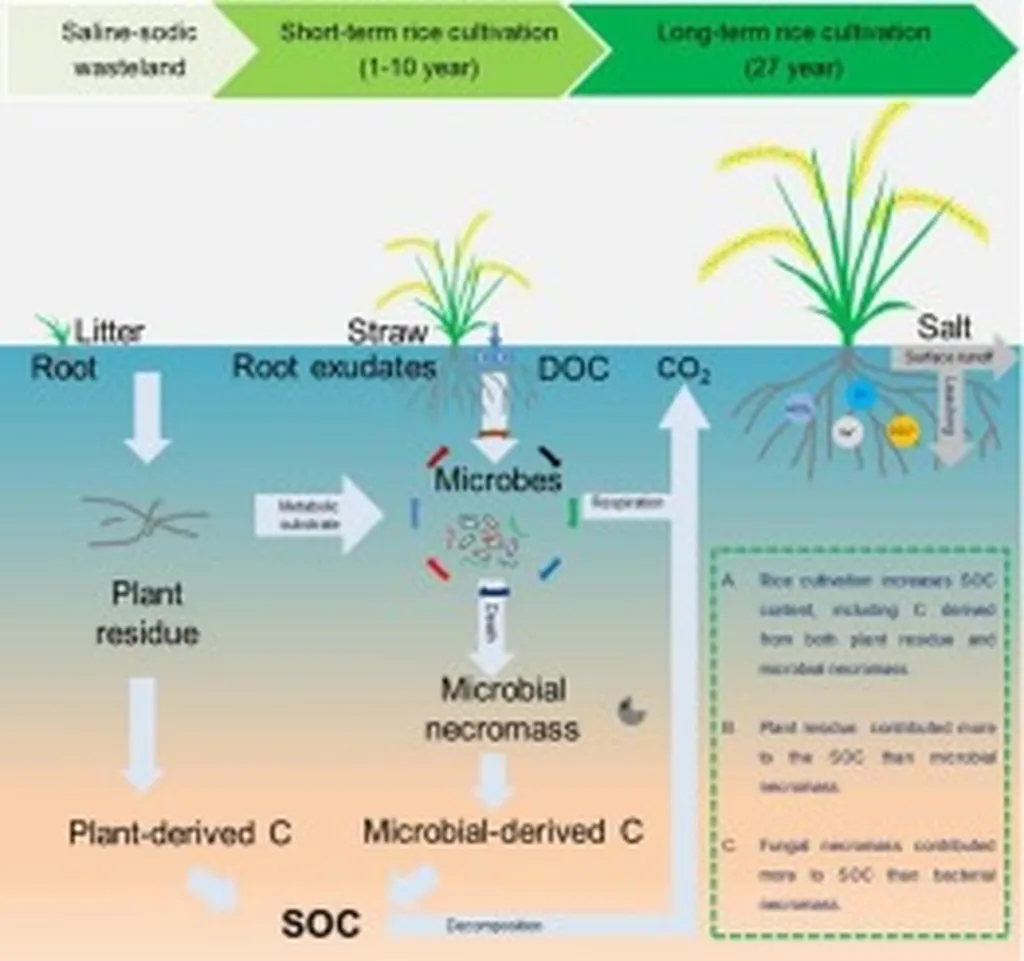In the vast, challenging landscapes of arid and semi-arid regions, saline-alkali soils pose a significant hurdle to agricultural productivity. These soils, characterized by high levels of salt and sodium, can stunt plant growth and reduce crop yields. However, a recent study published in *Climate Smart Agriculture* offers a glimmer of hope, revealing how long-term rice management can enhance soil aggregate stability in these problematic soils, potentially unlocking new avenues for sustainable agriculture.
Soil aggregates, often referred to as the “structural skeleton” of the soil matrix, are crucial for maintaining soil fertility, structural integrity, and overall ecosystem health. In saline-alkali soils, these aggregates are often weak and unstable, leading to poor soil structure and reduced water infiltration. But according to the study led by Hao Hu from the College of Resources and Environment Sciences at China Agricultural University, rice management over a decade can significantly improve this situation.
The research, conducted in the sodic saline-alkali soils of Baicheng, Jilin Province, northeastern China, involved a long-term field experiment with six treatments: rice management for 1, 2, 5, 8, and 10 years, and a non-cultivated control. The team found that long-term rice management increased the contents of soil organic carbon (SOC) and iron/aluminum (Fe/Al) oxides, both of which were positively correlated with aggregate stability. “Fe oxides were associated with the strongest positive correlations to stability,” Hu noted, while soil salinity showed negative correlations.
The study suggests a synergistic mechanism where SOC and Fe/Al oxides work together to enhance soil structure. SOC contributes through encapsulation and biochemical bonding, while Fe/Al oxides provide mineral bridging. This organic-inorganic interaction could be a game-changer for soil restoration in saline-alkali regions.
The commercial implications of this research are substantial. Saline-alkali soils are widespread, and their rehabilitation could open up new areas for agriculture, boosting food security and economic growth. “This study deepens our mechanistic understanding of soil physicochemical reconstruction in saline-alkali soils and provides a theoretical basis for sustainable saline soil rehabilitation under salinity stress,” Hu explained.
The findings could shape future developments in soil management practices, particularly in regions grappling with soil salinity. By adopting long-term rice management strategies, farmers and agricultural stakeholders could improve soil health and productivity, ultimately enhancing the resilience of agricultural systems in the face of climate change and land degradation.
As the world seeks sustainable solutions to feed a growing population, this research offers a promising path forward. It underscores the importance of understanding and harnessing the complex interactions between soil components to create healthier, more productive agricultural landscapes. With further research and practical application, the insights from this study could revolutionize soil management and contribute to a more sustainable future for global agriculture.

